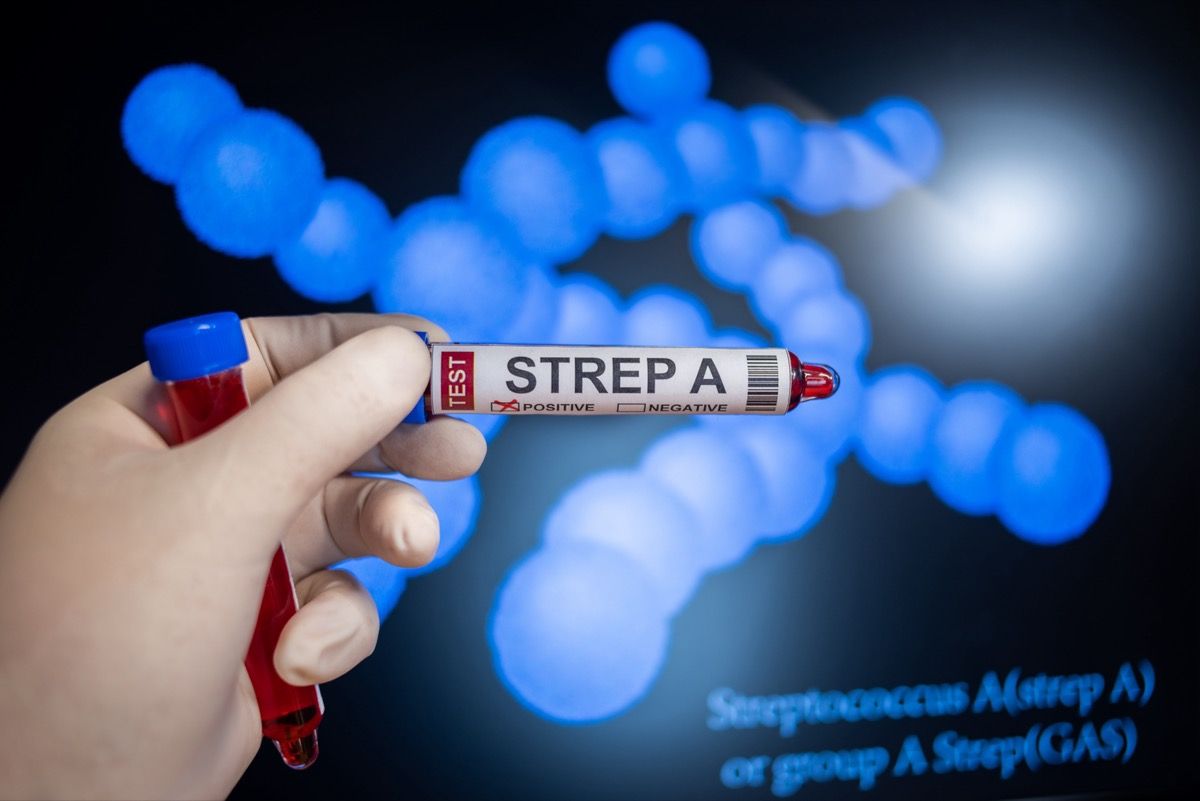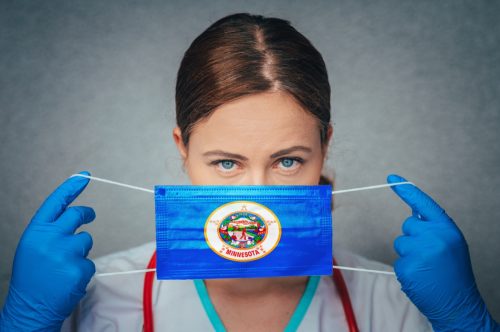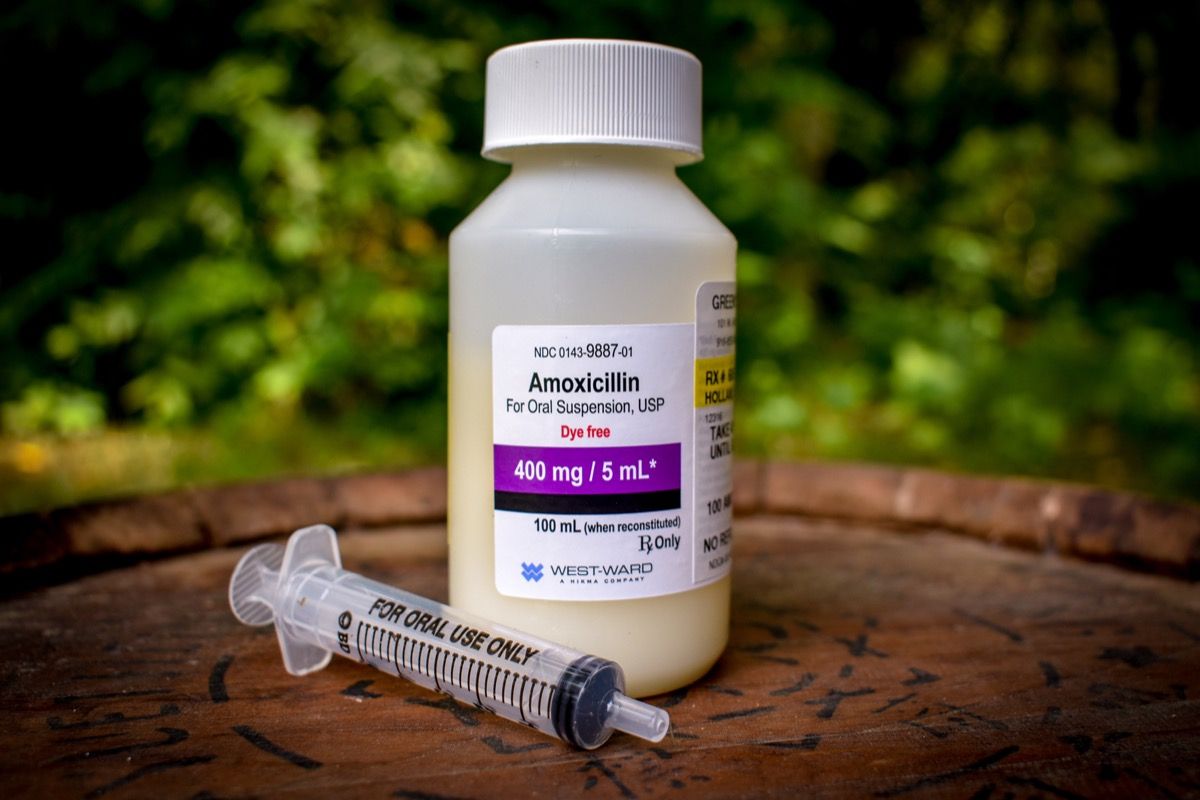Strep A “Superinfections” Are Spreading
You’ve probably heard of strep throat, and likely have had a case of it yourself at some time in your life, but a new strain of the strep bacteria, commonly referred to as Strep A, is causing “superinfections” around the world—and in some cases, the symptoms are proving to be lethal.
“Group A Streptococcal (GAS) infection commonly causes mild illnesses such as tonsillitis, pharyngitis, impetigo, cellulitis, and scarlet fever. However, in rare instances, GAS infection can lead to invasive iGAS, which can cause life-threatening conditions,” warned the World Health Organization just days ago.
Cases of Strep A have appeared in France, Ireland, the Netherlands, Sweden, and the United Kingdom of Great Britain and Northern Ireland, “mostly affecting children under 10 years of age,” says the WHO. Now, it’s in America, and adults can get infected as well.
So, what is Strep A, how can you spot the symptoms, and what can you do to keep yourself and your family healthy? Read on for what the CDC and doctors are advising as cases rise in the U.S.
RELATED: 4 Science-Backed Ways to Get Over a Cold Faster
The outbreak is a tricky one to track because symptoms vary so wildly. Streptococcus pyogenes, also known as group A Streptococcus (GAS), is a bacterium that can cause a range of infections in humans.
These infections can vary from relatively mild conditions such as pharyngitis (also known as strep throat) and impetigo, to more severe infections such as necrotizing fasciitis (also known as flesh-eating disease) and sepsis.
GAS infections are spread through close contact with respiratory secretions (such as saliva or mucus) from an infected person, or through contact with a surface or object that has been contaminated with these secretions. Symptoms of GAS infections can include sore throat, fever, redness and swelling in the affected area, and in more severe cases, difficulty breathing, severe pain, and shock.
Why is it spiking now? “The observed increase may reflect an early start to the GAS infection season coinciding with an increase in the circulation of respiratory viruses and possible viral coinfection which may increase the risk of invasive GAS disease. This is in the context of increased population mixing following a period of reduced circulation of GAS during the COVID-19 pandemic,” says the WHO.

Last week, the first confirmed pediatric fatalities were reported—two youngsters in the Denver area.
In Europe, two children in France, seven in the Netherlands, and more than 16 in the United Kingdom have fallen ill and died due to Strep A. “These are cases beyond an ordinary strep throat,” James Versalovic, MD, PhD, told NBC News.

Strep A cases have sprung up in Colorado, Minnesota, Arizona, Texas, and Washington. The Minnesota Department of Health issued the following Health Advisory:
“Based on preliminary data, the number of iGAS cases reported in November was twice the number of cases in other months (46 cases in November to date compared to an average of 20 cases/month in 2022). To date, cases occurring in the community are not known to be epidemiologically linked and there are no obvious geographic patterns of illness. Case increases have been observed in all age groups but the increase is notable in pediatric and elderly patients and may be related to increasing respiratory viral activity. MDH continues to monitor reported iGAS cases.”

The CDC says it’s “looking into a possible increase in invasive group A strep (iGAS) infections among children in the United States. iGAS infections include necrotizing fasciitis and streptococcal toxic shock syndrome.”
The organization also warned of a current shortage of antibiotics, which isn’t helping the situation. “There is a national shortage of the liquid antibiotic (amoxicillin suspension) most often prescribed to children to treat group A strep infections. The shortage is anticipated to last several months.”
The CDC’s advice if you need amoxicillin in your area and can’t find it? “Talk with [your] doctor about other antibiotic options.”
READ THIS NEXT: Dr. Fauci Has New Advice on Staying Safe From COVID at Holiday Gatherings

As we said, Group A Streptococcal (GAS) infections are caused by bacteria that are transmitted through close contact with an infected person, such as through respiratory droplets when an infected person coughs or sneezes. Here are some steps you can take to stay safe:
Wash your hands frequently: Wash your hands with soap and water frequently, especially before eating and after using the bathroom.
Avoid close contact with infected people: Avoid close contact with people who are infected with GAS, and avoid sharing personal items such as towels, toothbrushes, and utensils with them.
Cover your mouth and nose: Cover your mouth and nose with a tissue or your elbow when you cough or sneeze to reduce the spread of respiratory droplets.
Seek medical attention: If you think you may have a GAS infection, seek medical attention as soon as possible. GAS infections can be serious and may require treatment with antibiotics.
Antibiotics can help to eliminate bacteria and prevent complications, but it’s important to finish the entire course of antibiotics as prescribed by a healthcare provider, even if you start feeling better, to ensure that the infection is completely eradicated.
In severe cases, hospitalization and additional treatment may be necessary.
" Conservative News Daily does not always share or support the views and opinions expressed here; they are just those of the writer."




Now loading...